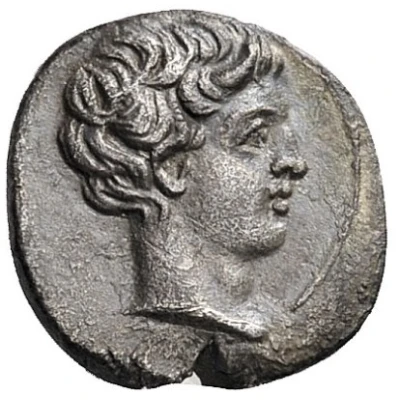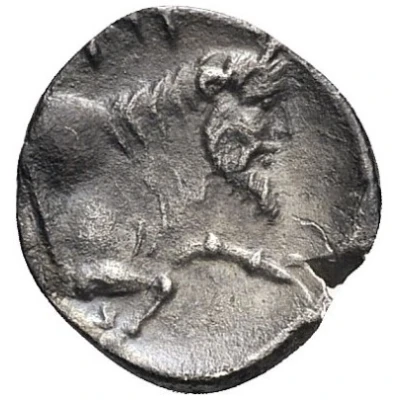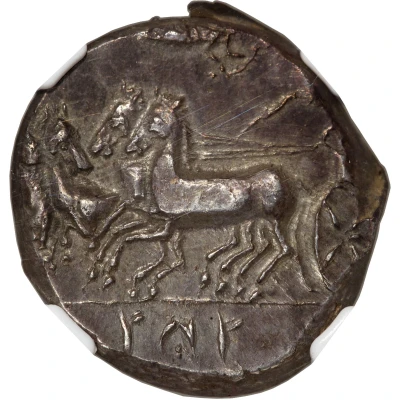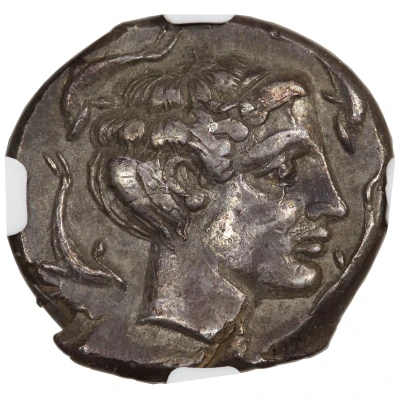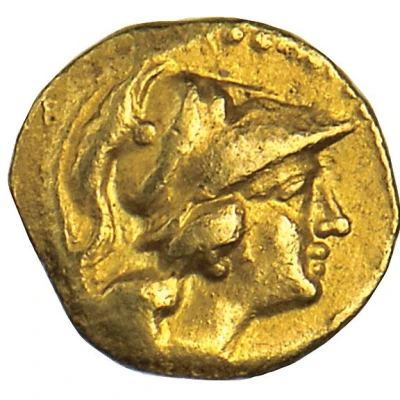
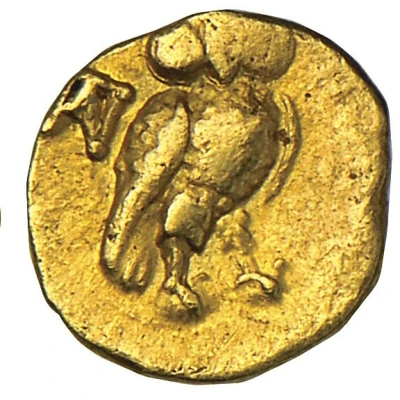

© Roma Numismatics Limited
Gold Tritartemorion - Pyrrhos of Epiros 276 BC
276 BC year| Gold | 0.54 g | - |
| Issuer | Ziz (Punic Sicily) |
|---|---|
| Type | Standard circulation coin |
| Year | 276 BC |
| Value | Tritartemorion (25⁄8) |
| Currency | Litra |
| Composition | Gold |
| Weight | 0.54 g |
| Shape | Round (irregular) |
| Technique | Hammered |
| Demonetized | Yes |
| Updated | 2024-10-09 |
| Numista | N#197830 |
|---|---|
| Rarity index | 97% |
Reverse
Owl standing right, ΠA monogram to left.
Comment
Panormos was a Phoenician settlement occupying the site of present-day Palermo. The city was never Greek and subsequently became the capital of Carthaginian Sicily. Its spacious and magnificent harbor made it an important naval and military base. Panormos briefly fell into the hands of Pyrrhos (276 B.C.) along with most of the rest of the cities controlled by Carthage, including Enna, Akragas, Heraklea, Selinos and Segesta. Distrust and rivalries among his Sicilian allies, the arrival of Carthaginian reinforcements, and his own heavy-handed tactics caused Pyrrhos to lose his Sicilian Greek allies and forced him to return to Italy. Thereupon Panormos again became Carthaginian and remained so until captured by Rome in 254 B.C.This fractional gold Stater may have been struck as a donative issue by the Greek forces of Pyrrhos who briefly occupied the city. Struck on the Attic standard, it should be viewed as related to contemporary gold issues of Metapontion and Tarentum, also struck to finance the military operations of Pyrrhos of Epiros. The choice of Athena/owl and Apollo/lyre types may have been intended to highlight the concept of Greeks fighting barbarians.
Interesting fact
The Gold Tritartemorion - Pyrrhos of Epiros (276 BC) from Ziz (Punic Sicily) is a rare and valuable coin that features the image of Pyrrhos, a Greek king who ruled over the city of Epiros in the 3rd century BC. What makes this coin particularly interesting is that it was minted during a time when the Carthaginian Empire was at the height of its power, and yet it still bears the image of a Greek king. This highlights the complex political and cultural dynamics that existed in the ancient Mediterranean world, where different civilizations and empires often interacted and influenced one another.
